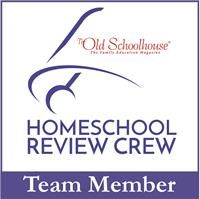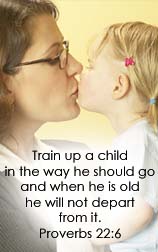
We have always enjoyed our little science observations to explore God's great creation. If you have been reading my blog for any length of time, you know we love hands-on learning. From fruit fly observations and caterpillar metamorphosis to exploring outside and coming home with tons of nature finds for our science table we have enjoyed science. However, as the girls are now getting older I want to make sure we are learning all we can and should be learning. We still love our hands-on observations, but mommy can't always explain everything satisfactorily and I know the girls love to be able to dig deeper, plus there are just some things we can't do at home. So, I hope you can understand when I say I was thrilled when we were picked to review the Science4Us.com Online Subscription from Science4Us.com. I was intrigued to discover it was from the creators of VocabularySpellingCity.com because we reviewed that last year and the girls really enjoy it.
This wonderful online science curriculum is geared for early elementary students, K-2nd grade, making it perfect for Tabitha and Amelia, though it can be used by 3rd-5th graders as a review. Even Hannah has been enjoying having her own account and she only just turned 4. With Science4Us.com, children are given "foundational science knowledge" with a curriculum that is complete and standards-based. This knowledge is gained as they view the videos, answer questions, write and draw in their digital notebooks, and interact with onscreen experiments. In addition, there are detailed lesson plans for the teacher/parent which include additional printable worksheets and activities to dig deeper into the material.
Each module of the curriculum is built using the 5E Inquiry-Based Instructional Model. If you are not sure what that is referring to, you are not alone. I had no idea what that meant when I first researched the program. However, it is very easy to understand. The 5 E's are:
Each module of the curriculum is built using the 5E Inquiry-Based Instructional Model. If you are not sure what that is referring to, you are not alone. I had no idea what that meant when I first researched the program. However, it is very easy to understand. The 5 E's are:
- Engage
- Explore
- Explain
- Elaborate
- Evaluate
Every module starts out with a lesson that helps to access what the student already knows about the subject, helping to determine any misconceptions. This is the Engage portion of the module. The next lesson helps the child to develop understanding and generate ideas, this is the Explore part. In the lesson that is based on Explain they are given pertinent vocabulary and descriptions of the new concept. Then there are a variety of different lessons/activities to help them Elaborate or enhance their understanding through in-depth learning experiences. Finally the teacher/parent and student are able to Evaluate what they have learned.
We were given a 6 month membership in which the children and I each get our own accounts. In my teacher account I have access to the lesson plans from which I can decide which lessons I am going to assign in which module and I can view the girls progress and their assignments. It is quite easy to navigate the Science4Us.com website. When I log into my account I hover over the Teaching Tools tab and a menu will drop down.
I can choose to go to View Assignments, Student Reports, Lesson Plans, Teaching Strategies or the Notebook.
The same Teaching Tools selections can also be found at the bottom of the page along with some extremely helpful videos to help the parent/teacher come to a better understanding of the program.
What exactly will you find in each section?
- Lesson Plans will allow you to see details of the lessons.
- Teaching Strategies contains a slew of resources for the teacher in 3 different categories.
- Prior Knowledge Strategies
- Literacy Skills Strategies
- Lesson Follow-Up Strategies
- Student Reports allows the parent/teacher to view their children's Overall Progress along with details for each module or lesson.
I can then choose to view each individual child's saved work:
 |
| From here I can see all the activities that Tabitha saved which include notebook work and activities in the lesson. I can click on each entry to enlarge it, check it and leave comments on it. |
Or I can choose to view the assignments that have been completed in a specific module:
I could also choose to see the total time spent on each lesson, the date they first attempted the lesson and the date they completed it. In the screen shot above you can see the drop down menu which says "Scores and Completions," this is where you can choose which to view.
- Assignments allows the parent/teacher to see which assignments have been assigned. You can choose to edit the assignments, changing the beginning and/or ending dates or adding an assignment.
- There is also a Notebook in the parent/teacher account, but I haven't figured out exactly what I would use that for. The children have their own digital notebook that they use in each lesson. That will be found in their student reports.
So, how have we been using Science4Us.com? Let me tell you a bit about that.
When we first received our membership I was not quite aware of what all was available in the Lesson Plans section. I wanted to get the children started working right away because they had such fun viewing the demo videos when we were researching the program. There are 4 main modules to choose from and each one has sub-modules.
- Inquiry
- Science Skills
- Physical
- Matter
- Energy
- Force and Motion
- Life
- Living Things
- Balance in Nature
- Earth/Space
- Earth
- Space
As we had been focusing on so many different animals in our My Father's World curriculum I decided we would start in the Life module in the Animals section under Living Things. I assigned the girls all of the lessons available for Animals. It was quite simple.
 |
| You choose which activities you want to assign, then you choose the date they are to start and when they should have it completed, then you choose which students are going to use this assignment. |
The girls then log into their account. Here is a screenshot of what they see as soon as they log in.
The part they really focus on is the My Assignments box in the middle of the screen, however, they could also choose their own lesson to complete from the "Choose a Book of Science" section on the right. In the left corner they are able to view their notebook and the assignment details. They can check out their student reports as well to see how they are doing. A parent could also check their child's scores from here instead of logging into their own account. Additionally, there is a glossary of all the vocabulary words for each module.
From the log in screen they can click on which assignment they want to work on. Once they click on an assignment it will start loading.
From the log in screen they can click on which assignment they want to work on. Once they click on an assignment it will start loading.
I have since decided that one child can use it at a time while the other works on their workboxes.
As they complete assignments they get a star on the assignment icon so they know which ones they need to work on. They are able to redo assignments if they so choose. They work their way through the assignments, answering questions and drawing pictures in their digital notebook
From there we moved to Living and Nonliving Things. We then changed modules completely and went into the Earth's Materials lessons of the Earth/Space Module. Which helped us segue into our new units of Rocks and then Jewels with My Father's World.
I then thought it would be fun to move onto the Physical Module. The Physical Module is broken down into three units: Matter, Energy, Force & Motion. Conveniently, they were learning about matter in their science class at co-op.
 |
| Here Tabitha is introducing the lesson from what she already remembered before we started working on the printable worksheet from the Science4Us.com lesson |
 |
| They then went on to answer the questions comparing solids and liquids. |











































![[PREMIO2009.png]](https://blogger.googleusercontent.com/img/b/R29vZ2xl/AVvXsEjXD_Gx-wZ9EM5hXKrEYLksEBkYfRQtmb8VDVTDG_yyLggQoFIstZsh4zszdG20KqErZicRzEhiNYLty7j3IMXJYsABqkXjr8pp-ncj71xCbpxlXGbGpZq2fTuDQqq1RMKV4DPcDBnBViA/s1600/PREMIO2009.png)




No comments:
Post a Comment
Thank you for visiting my blog today. I love to read your comments, so please leave me one if you have the time.
Blessings